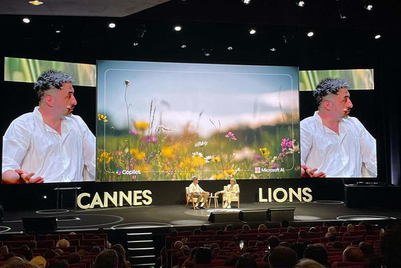
Millennials and Gen Zs are arguably our most important audiences in 2020. Last year, they accounted for 2.43 billion and 2.46 billion, or well over half of the world’s population, and as many of them work their way up the corporate ladder or enter the workforce, their spending power is similarly on the rise.
In fact, it’s predicted that millennials will comprise roughly 75% of the world’s working population by 2025. They are fast becoming our key decision-makers, so what does it take to meaningfully connect with them in this day and age?
Out with the old, in with the new
Most brands have lived and breathed a business model that has served them well for decades, which is geared towards mass audiences who consume as and when they are told – and are fine with that.
However, millennials and Gen Zs have grown up in a world where the brand vs consumer relationship is a two-way street, one where their voices are heard. Think the humble blog, which has empowered every individual to become a citizen journalist; or the rise of social media and subsequent proliferation of influencer culture.
They want to be a part of a narrative rather than a passive consumer of it. And experiential is effective as it enables the audience to take back some control. The most effective experiences are those that are hyper personalised to the wants and needs of the respective consumer group and enable them to dictate – within reason – their own journey.
Take your cue from esports
The esports industry is booming: Research firm Statista revealed that the sector was valued at nearly US$865 million in 2018, and it predicts revenues will reach US$1.79 billion by 2022. Why? Because it uses the world of connectivity to unify an audience.
In the past, gamers competed with one another across all corners of the globe and rarely met in person. But live experiences enable them to manifest their shared passions by creating platforms for them to come together face-to-face. It effectively balances consumers’ passion for their craft in the virtual world with their innate human desire to physically connect with one another.
The same trend has emerged with the social influencer—now Gen Zs in particular attend events to see their favourite social media stars in the flesh. Smart brands are unifying their audiences by incorporating all types of celebrities—whether speakers, models, performers or other—into their live experiences in meaningful ways.
Make live an end point, not a touchpoint
Essentially, brands that shift away from the traditional above-the-line approach—the one that is focused on bombarding the market with messages that may or may not be relevant to them—and embrace the new above-the-line will succeed. Why? Because in the new above-the-line, immersion and participation are a key part of the campaign continuum.
While in the past experiential may have formed part of a channel journey which saw brands tap into it along the way, today they are more often than not the climactic moment in a campaign. The validation of the virtual world is a live end point.
Live experiences are essentially a manifestation of communities, conversations and connections developed in virtual worlds—worlds entirely constructed by the unification of personal choice—over a single brand voice.
When they consume media, millennials and Gen Zs want to have a voice, they want to be connected, and they want to express themselves through that media. The most effective way to achieve this in 2020 is by understanding the potency of a combined digital and live approach, one which fosters a sense of community throughout the consumer journey and then culminates with a live engagement.
Stephen Horsley is director of strategic accounts at INVNT.



.jpg&h=334&w=500&q=100&v=20250320&c=1)


.png&h=334&w=500&q=100&v=20250320&c=1)




.png&h=334&w=500&q=100&v=20250320&c=1)

.jpg&h=268&w=401&q=100&v=20250320&c=1)



.png&h=268&w=401&q=100&v=20250320&c=1)
.png&h=268&w=401&q=100&v=20250320&c=1)

